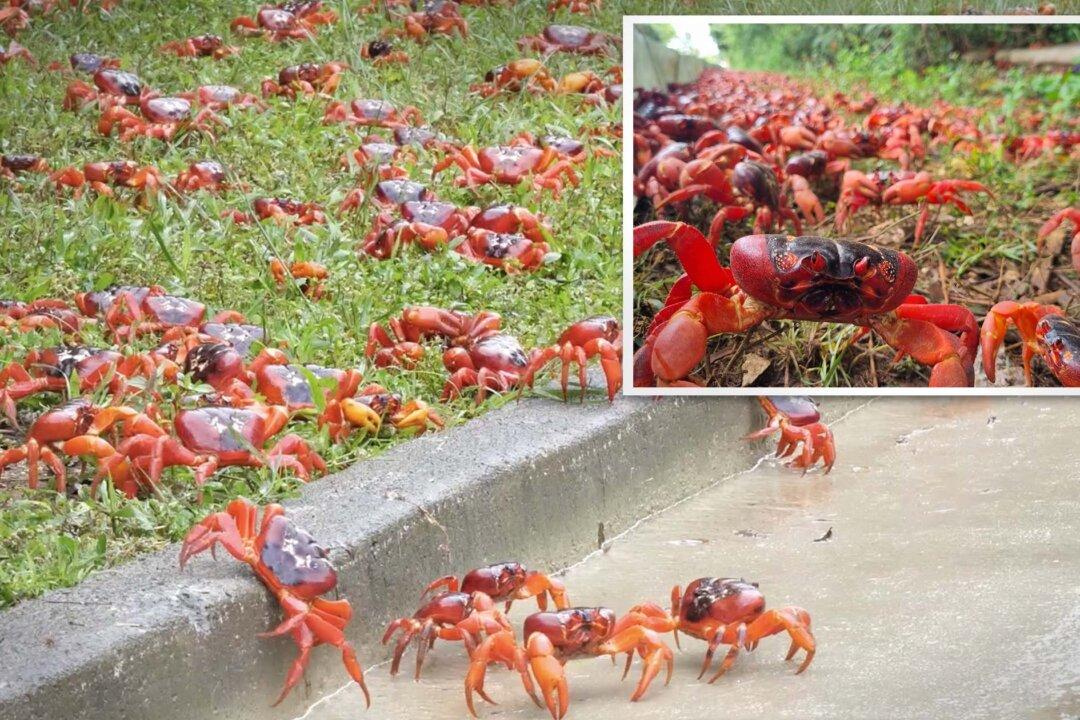In one of the world’s most spectacular wildlife migrations, 65 million red crabs have begun their annual 20-kilometer (nearly 13-mile) trek from the tropical forests of Christmas Island to the sea to breed. The inhabitants of the Australian territory, located in the Indian Ocean, have more protective measures in place than ever before.
“The red crab is the island’s keystone species, and the health of its population underpins the health of the entire island ecosystem,” said Christmas Island National Park’s invasive species manager, Derek Ball, in a news release. “Each year the red crabs make their annual pilgrimage from the forest plateau down to the sea to mate and spawn. It’s an event that captures the attention of nature lovers across the world.”





